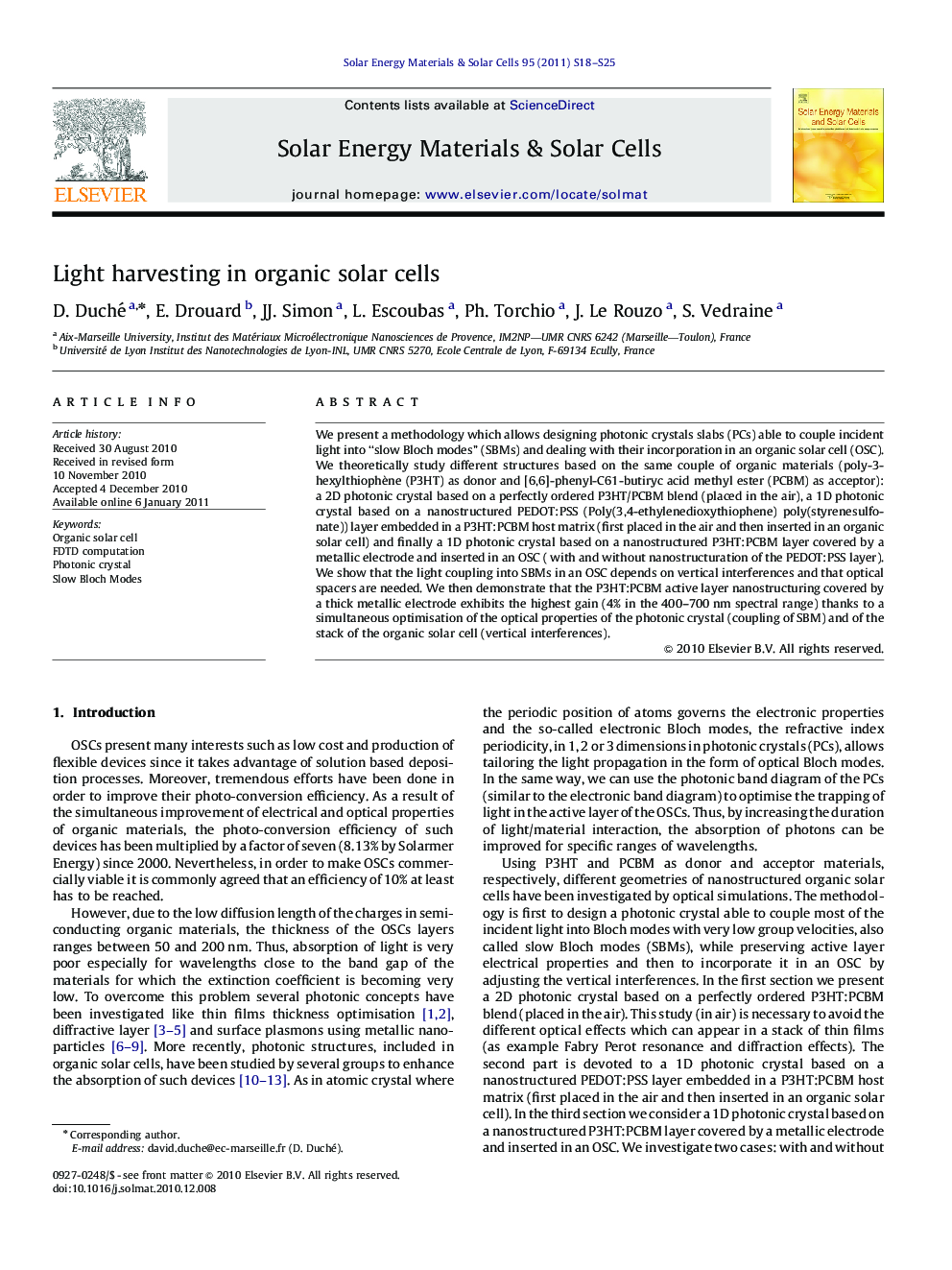| Article ID | Journal | Published Year | Pages | File Type |
|---|---|---|---|---|
| 79382 | Solar Energy Materials and Solar Cells | 2011 | 8 Pages |
We present a methodology which allows designing photonic crystals slabs (PCs) able to couple incident light into “slow Bloch modes” (SBMs) and dealing with their incorporation in an organic solar cell (OSC). We theoretically study different structures based on the same couple of organic materials (poly-3-hexylthiophène (P3HT) as donor and [6,6]-phenyl-C61-butiryc acid methyl ester (PCBM) as acceptor): a 2D photonic crystal based on a perfectly ordered P3HT/PCBM blend (placed in the air), a 1D photonic crystal based on a nanostructured PEDOT:PSS (Poly(3,4-ethylenedioxythiophene) poly(styrenesulfonate)) layer embedded in a P3HT:PCBM host matrix (first placed in the air and then inserted in an organic solar cell) and finally a 1D photonic crystal based on a nanostructured P3HT:PCBM layer covered by a metallic electrode and inserted in an OSC ( with and without nanostructuration of the PEDOT:PSS layer). We show that the light coupling into SBMs in an OSC depends on vertical interferences and that optical spacers are needed. We then demonstrate that the P3HT:PCBM active layer nanostructuring covered by a thick metallic electrode exhibits the highest gain (4% in the 400–700 nm spectral range) thanks to a simultaneous optimisation of the optical properties of the photonic crystal (coupling of SBM) and of the stack of the organic solar cell (vertical interferences).
